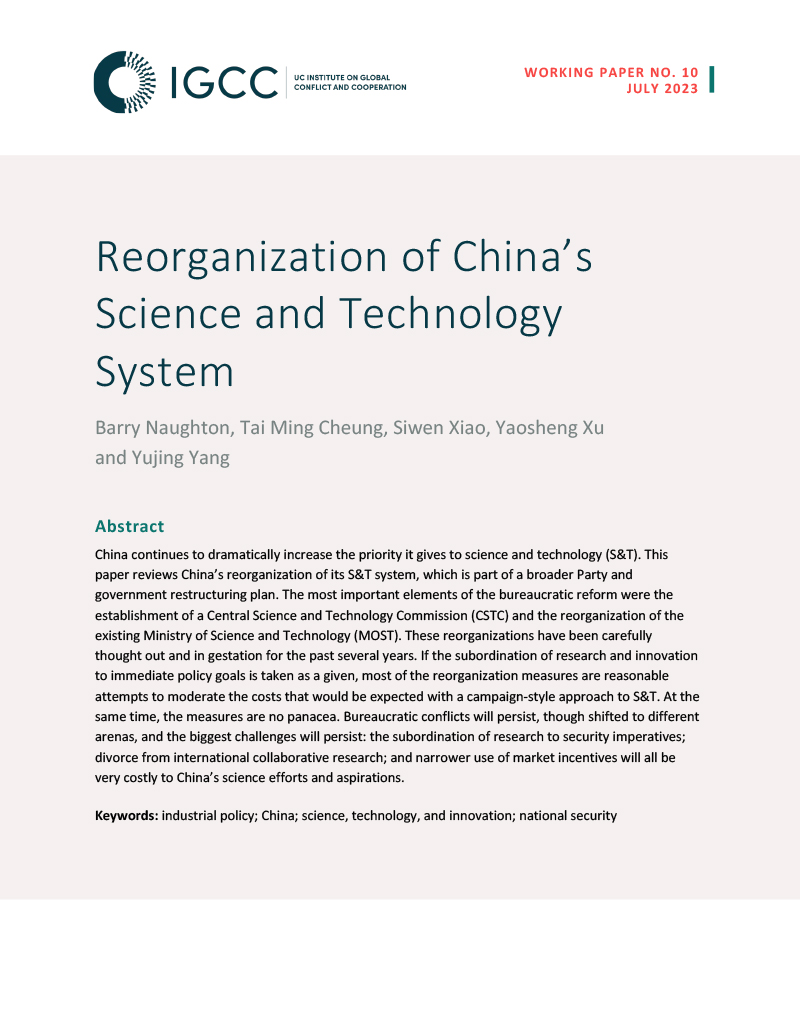Reorganization of China’s Science and Technology System

In this working paper, Barry Naughton, Tai Ming Cheung, Siwen Xiao, Yaosheng Xu, and Yujing Yang describe the far-reaching changes occurring in China’s science and technology system, including the newly created Central Science and Technology Commission, and what they mean for China’s future.
DownloadChina continues to dramatically increase the priority it gives to science and technology (S&T). This paper reviews China’s reorganization of its S&T system, which is part of a broader Party and government restructuring plan. The most important elements of the bureaucratic reform were the establishment of a Central Science and Technology Commission (CSTC) and the reorganization of the existing Ministry of Science and Technology (MOST). These reorganizations have been carefully thought out and in gestation for the past several years. If the subordination of research and innovation to immediate policy goals is taken as a given, most of the reorganization measures are reasonable attempts to moderate the costs that would be expected with a campaign-style approach to S&T. At the same time, the measures are no panacea. Bureaucratic conflicts will persist, though shifted to different arenas, and the biggest challenges will persist: the subordination of research to security imperatives; divorce from international collaborative research; and narrower use of market incentives will all be very costly to China’s science efforts and aspirations.